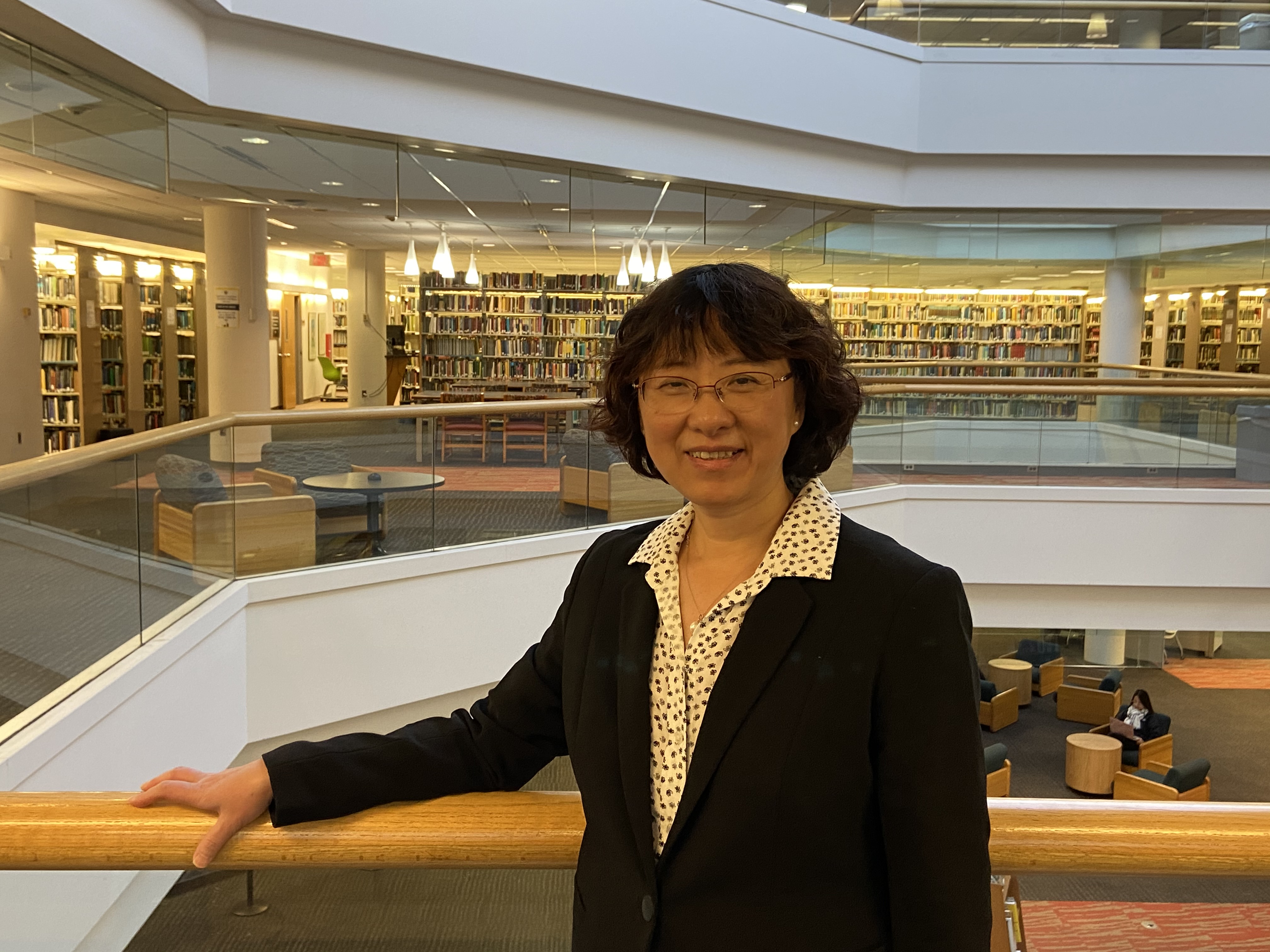Meet Heather Cai: Manager, Library Integrated Technology Systems
December 5, 2019
In February 2019, Heather Cai joined the Drexel University Libraries as its first Manager for Library Integrated Technology Systems. Communications Manager Stacy Stanislaw sat down with Heather to find out more about the Libraries’ many technology applications and systems that keep the organization running and to find out more about how she plans to ensure members of the Drexel community have access to all the DUL-provided electronic resources, information and services they’ve come to expect.

Q: Tell me about your background. Where did you work before you came to the Drexel Libraries?
I have worked in a variety of areas, including engineering, research, publishing, and academic libraries. In my last position as Implementation Consultant at Ex Libris, a ProQuest Company, I provided Alma (a leading library services platform) implementation services, including major system integrations, to academic library customers in North America. Prior to Ex Libris, I worked for McGill University Library in Canada as the Information Technology Services Librarian, where I managed and supported a spectrum of core library systems and led library technology projects.
Q: What is your role at the Drexel Libraries?
My role as the Manager, Library Integrated Technology Systems, is to develop and provide a vision in library technology services to support the Libraries’ strategic directions. I supervise a team of technology specialists and help plan, implement, and execute integrated library systems, applications and technology services that enable the Libraries’ efficient operations and effective strategy.
Q: What projects are you working on right now?
One major project I’m working on is the systematic review of the Drexel University Libraries’ (DUL) technology infrastructure. As you may know, DUL’s technology infrastructure is comprised of local, hosted, and cloud systems. These systems are connected to each other, and they are also integrated with campus-wide systems and beyond. In recent years, new systems, applications, and technologies have been introduced to the Libraries’ infrastructure, making it even more complex and dynamic, but not necessarily effective at the systems level. The goal of the project is to assess our infrastructure for its overall effectiveness and identify areas for system consolidation and integration. This project will lay the groundwork for a more robust and effective infrastructure that supports our long-term strategic plan.
For example, last summer, we created a comprehensive inventory of locally hosted servers, and now we’re developing a plan to make changes necessary to consolidate and optimize our systems. I am also overseeing a collaborative project that involves staff members from several departments at the Libraries to update the Libraries’ systems map, which will help us catch system-level changes made over the past few years and provide a more accurate picture of relevant systems and their relationships. We also initiated an implementation plan to separate ILLiad (the interlibrary loan system we use) and Ares (our course reserves system) from a shared physical server, which will give us more flexibility over scheduling and making upgrades to both systems, as well as more flexibility over the migration to next-generation technology in the future.
More recently, I took the lead for the iDEA working group. This group of DUL staff is working to manage the digital resources produced by members of the Drexel community (like electronic theses and dissertations) and provide access to those digital resources through iDEA.
I am also heavily involved in the Esploro Early Adopter project. Esploro is a research services platform under development by Ex Libris that aims to enable libraries to capture, manage, and disseminate their organization’s research output and data. Drexel is one of five institutions where different stakeholders—librarians, technical staff, and faculty—field test a pilot version of the platform and provide feedback to help shape the product before it is officially released. My role is to help translate client needs into vendor specifications and share Drexel’s recommendations with the vendor.
Q: I understand you recently went to the DLF [Digital Library Federation] Forum 2019 in Florida. Tell me one thing you learned at the conference and how you hope to apply it to your work at DUL.
It was indeed an eye-opener, especially since it was my first time attending the conference. If I must pick one thing, I would say the market – there were so many offerings and solutions: content specific solutions, such as handwriting text recognition and audio-visual A/V transcription generation; preservation and storage platforms; community-based storage services; Open Source solutions, and more. My observations, through conference presentations and chatting with the vendors and service providers, have led me to think the effective way is to take the content approach (i.e. knowing exactly what we have and what is important to our users before landing on a solution) since there are so many options out there! I will definitely be looking at how I can implement some of these ideas in my approach to digital issues and challenges, particularly as I get more involved in digital asset management and preservation at DUL.